The new Scott Scale cross-country bike prioritises lightness and efficiency with a new carbon layup and simplified construction.
The Scale is Scott’s 100mm hardtail cross-country bike. The brand says it now has similar geometry to the full-suspension Spark, featuring a slacker head angle of 67.9 degrees compared to 69.5 degrees on the previous version.
Scott says frame weight has been reduced on all variants of the carbon frame. The highest-modulus HMX-SL frame is now claimed to be 32g lighter than the previous model, weighing in at 847g compared to 879g for a medium-sized frame.
All Scale RC frames now feature hollow rear dropouts and post-mounted brakes, which are said to assist in shedding weight, while adding to the clean design language.
The range starts at £2,999 for the Scale RC Team and tops out at £13,999 for the Scale RC SL. A women's-specific Contessa model will also be available.
Intrigued by how this bike rides? You can check out Alex Evans' Scott Scale RC SL first ride review.
Lightweight claims, marginal gains and refined frames
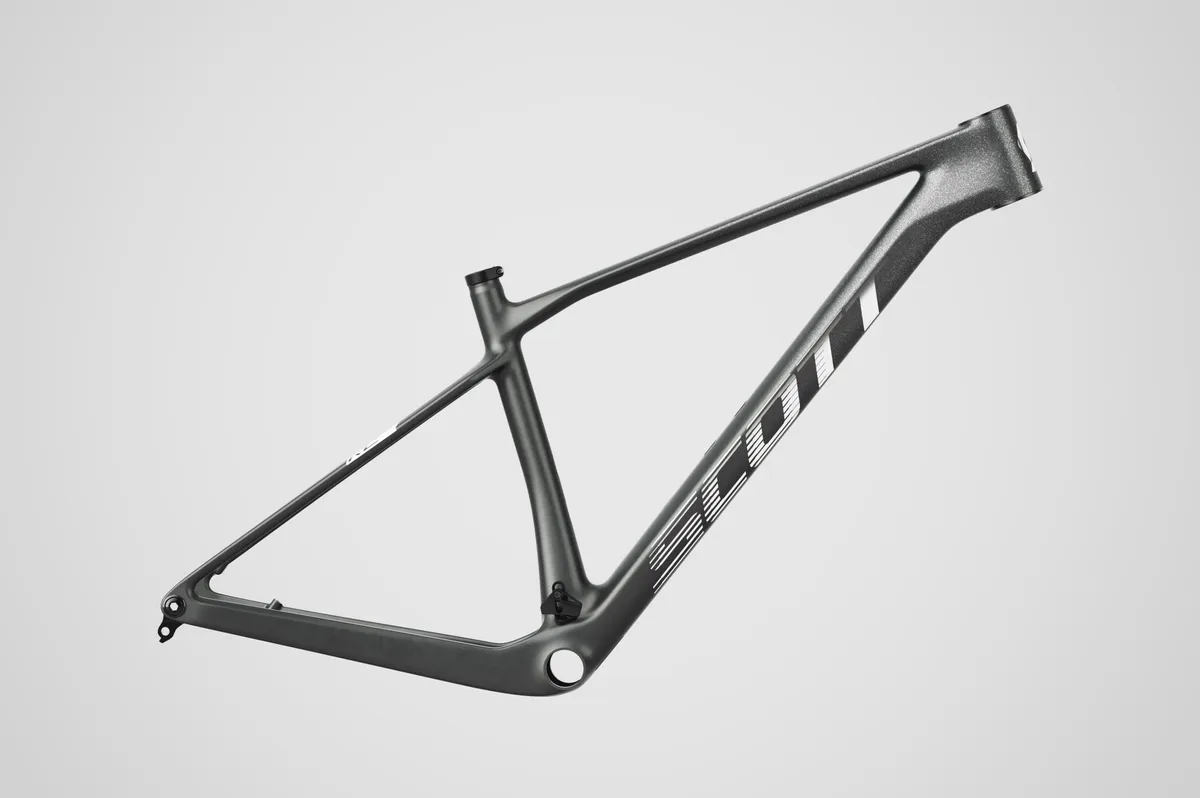
Scott says it has focused on balancing stiffness, strength and compliance rather than outright weight savings with the new Scale. The Scale RC frame is lighter across all layup variants according to Scott, with the HMF being 126g lighter at 1,013g, and the HMX 57g lighter at 912g, compared to the previous models.
Although minimal, small gains can add up at the sharp end of cross-country racing, where the Scale has been designed to help the likes of Nino Schurter and Kate Courtney to UCI World Cup success.
The frame is said to feature a higher proportion of higher-modulus carbon fibres in the head tube and bottom bracket, adding stiffness and efficiency.
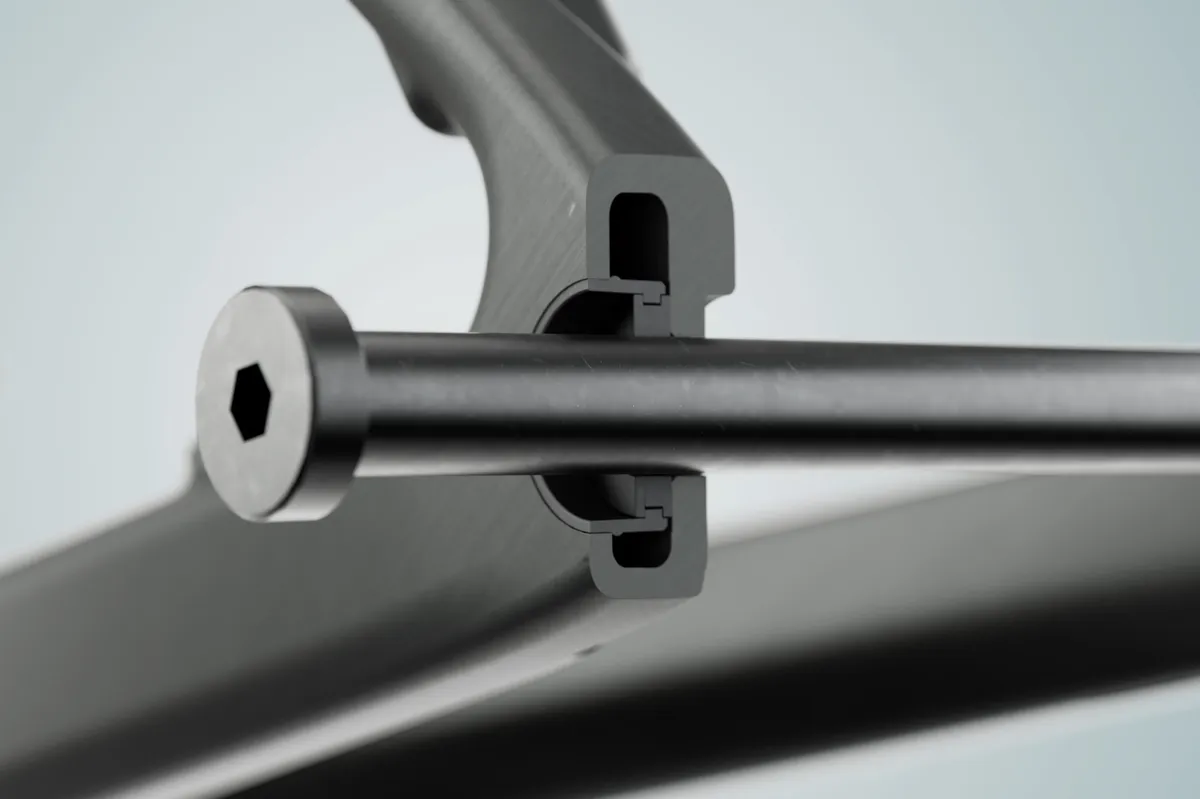
A new hollow dropout construction enables the axle head to clamp against the inner surface of the dropout. This leaves the outside of the thru-axle to sit flush with the surface of the dropout.
Scott claims this shaves 7.5g and allows for a narrower rear-triangle construction.
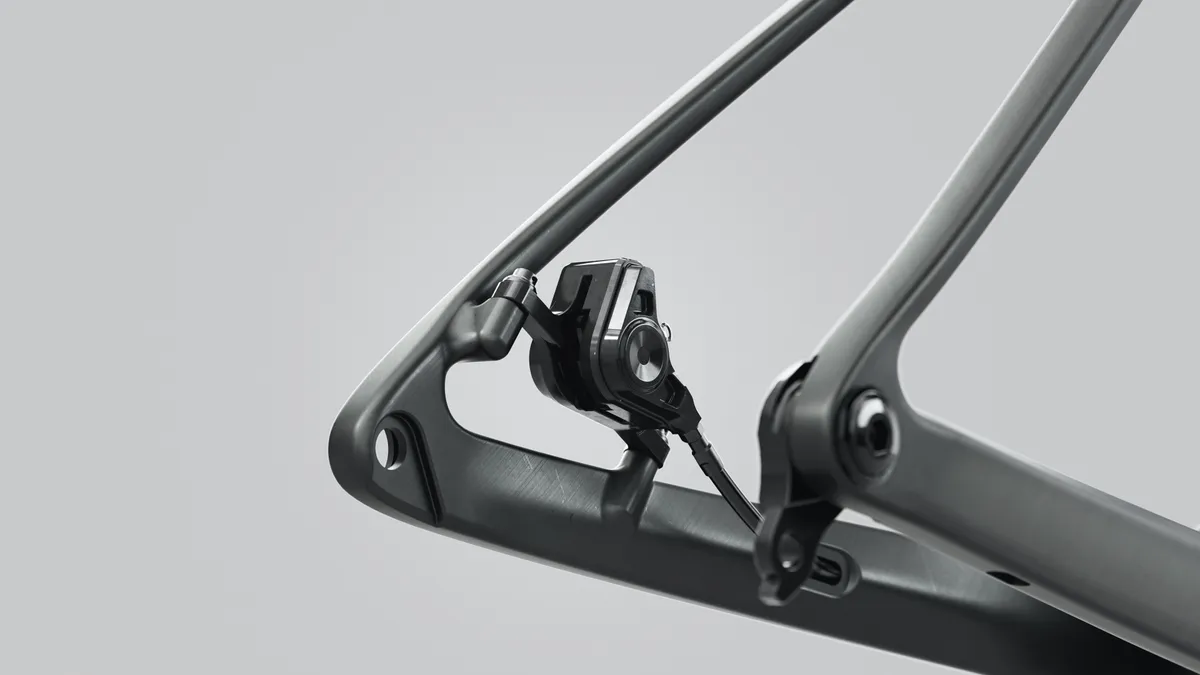
In a move seen on many lightweight cross-country bikes, including the Specialized Epic Hardtail and the Cannondale Scalpel HT, the rear brake now uses post mounts. Scott says this is the lightest solution possible and saves another 14g.
Scott tells us a 37g saving is made by reducing the number of metal inserts used on the frame, instead employing polymer inserts for the chain guide, bottle cage inserts and cable ports.
The chain guide can be removed when not in use and replaced with what Scott calls a “smart plug”, essentially a rubber grommet attached through the service door protecting the mount from the elements.
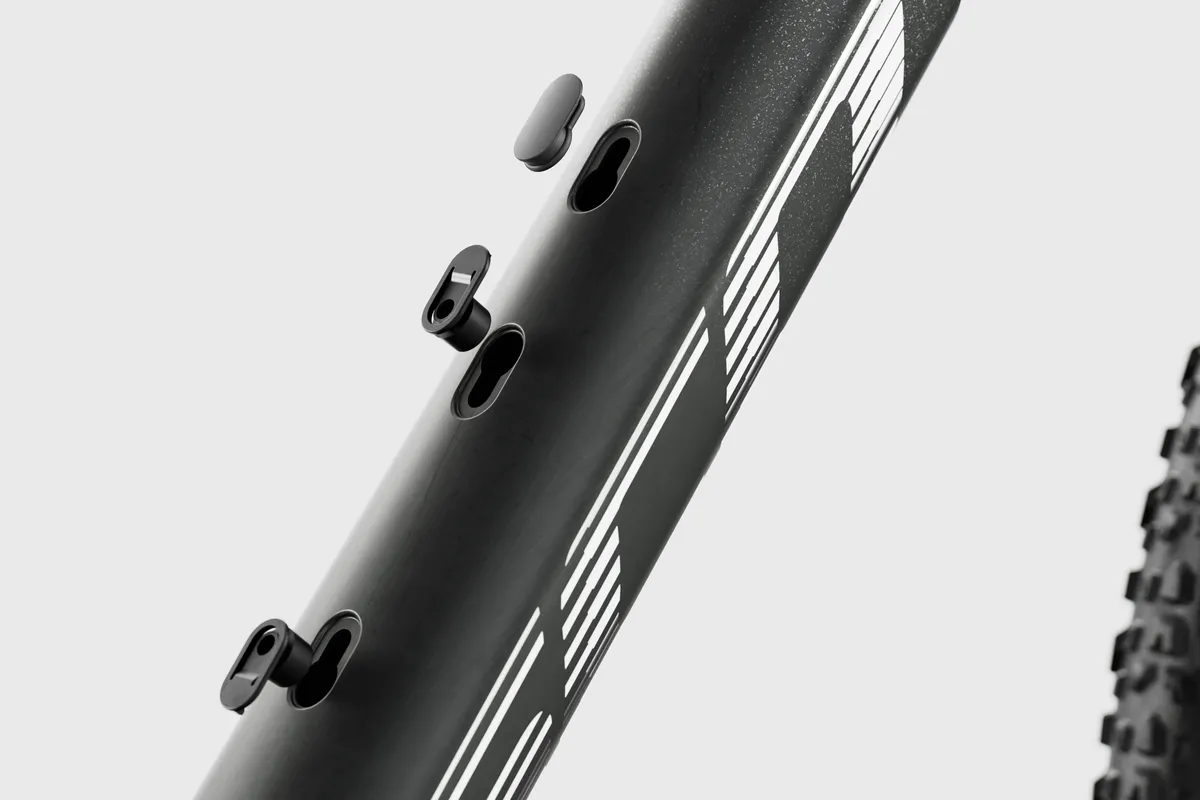
The brand says the bottle cage inserts can be plugged completely, leaving a flush finish on the down tube. They can also be replaced if you damage the thread, saving on expensive tapping or frame replacement.
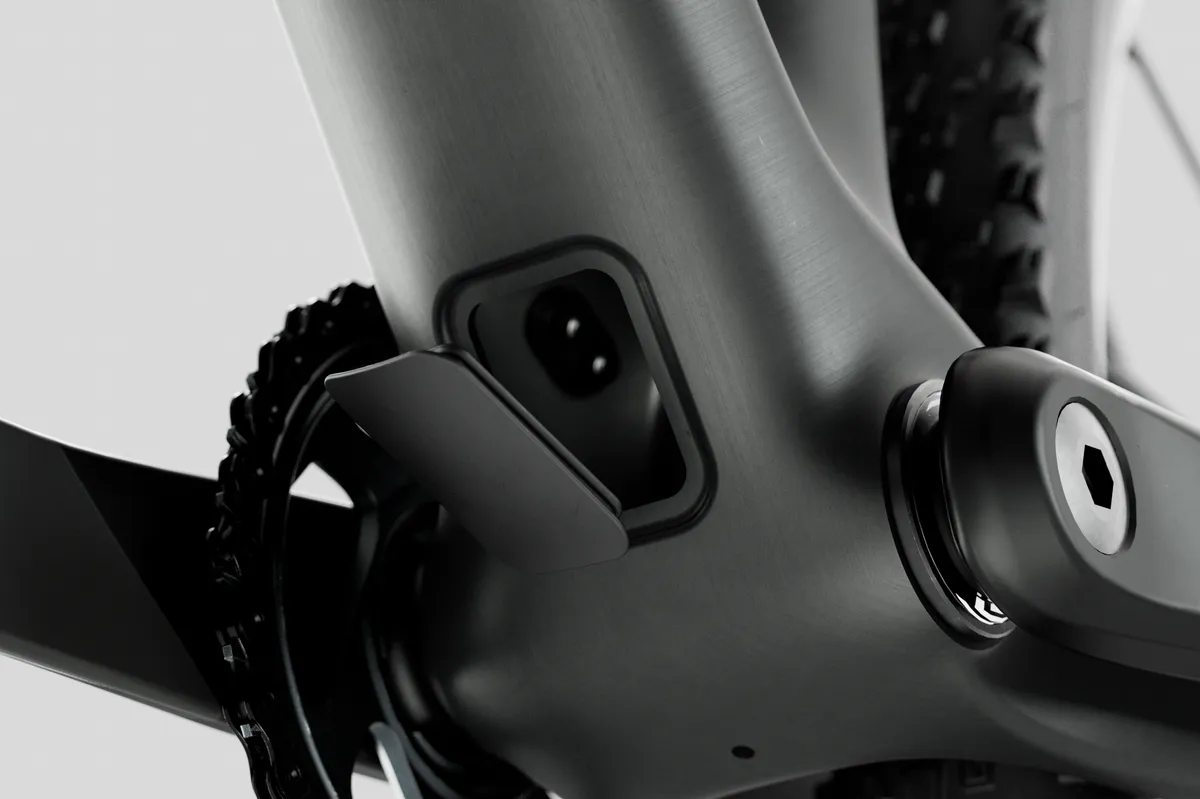
A service door on the down tube allows for access to the interior of the frame without any need to remove the bottom bracket. Scott says this makes internal cable routing and frame maintenance much easier.
There also appears to be room to fit a small trail bar inside, although we don’t know how accessible it would be.
Sibling similarities and slacker head angles
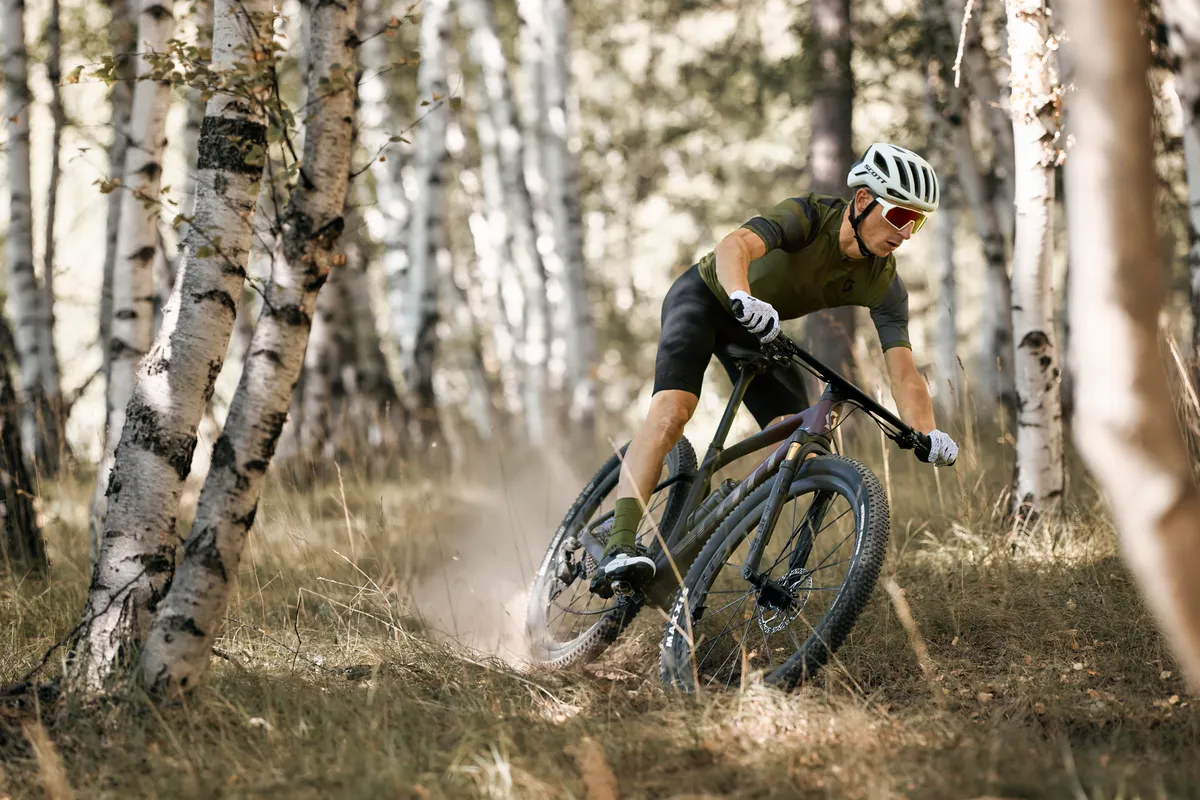
Scott says the new geometry takes inspiration from its full-suspension Spark XC race bike, while keeping the familiar characteristics of a hardtail.
The brand says it has focused on making the Scale competitive on a range of course types.
All four sizes (from small to extra-large) feature a head tube angle of 67.9 degrees, which is slacker than the 69.5 degrees on the previous model.
The slacker head angle is said to provide more aggressive handling while descending, but it is not quite as extreme as the 67 degrees found on the Cannondale Scalpel HT.
Seat tube angles are kept virtually the same through the sizes at 75.4 degrees, which is 1.8 degrees steeper than the previous Scale. It appears this has been done to compensate for the slacker head angle when climbing.
The chainstay length remains the same as the previous model at 425mm across the range of frame sizes, with Scott not adopting proportional geometry on the Scale.
Scott Scale geometry
| Size | Small | Mediun | Large | Extra-large |
|---|---|---|---|---|
| Head angle (degrees) (steep/slack) | 67.9/67.3 | 67.9/67.3 | 67.9/67.3 | 67.9/67.3 |
| Seat tube angle (degrees) | 75.4 | 75.4 | 75.3 | 75.3 |
| Seat tube length (mm) | 390 | 440 | 480 | 530 |
| Effective top tube length (mm) | 575 | 600.2 | 626 | 656.5 |
| Bottom bracket height (mm) | 313 | 313 | 313 | 313 |
| Standover height (mm) | 752 | 781 | 800 | 835.1 |
| Wheelbase (mm) | 1,105.40 | 1,131.10 | 1,158 | 1,189.40 |
| Chainstay length (mm) | 425 | 425 | 425 | 425 |
| Stack height (mm) | 600.3 | 604.9 | 618.9 | 628.1 |
| Reach (mm) | 418.5 | 442.3 | 463.6 | 491.2 |
Scott Scale specs and prices
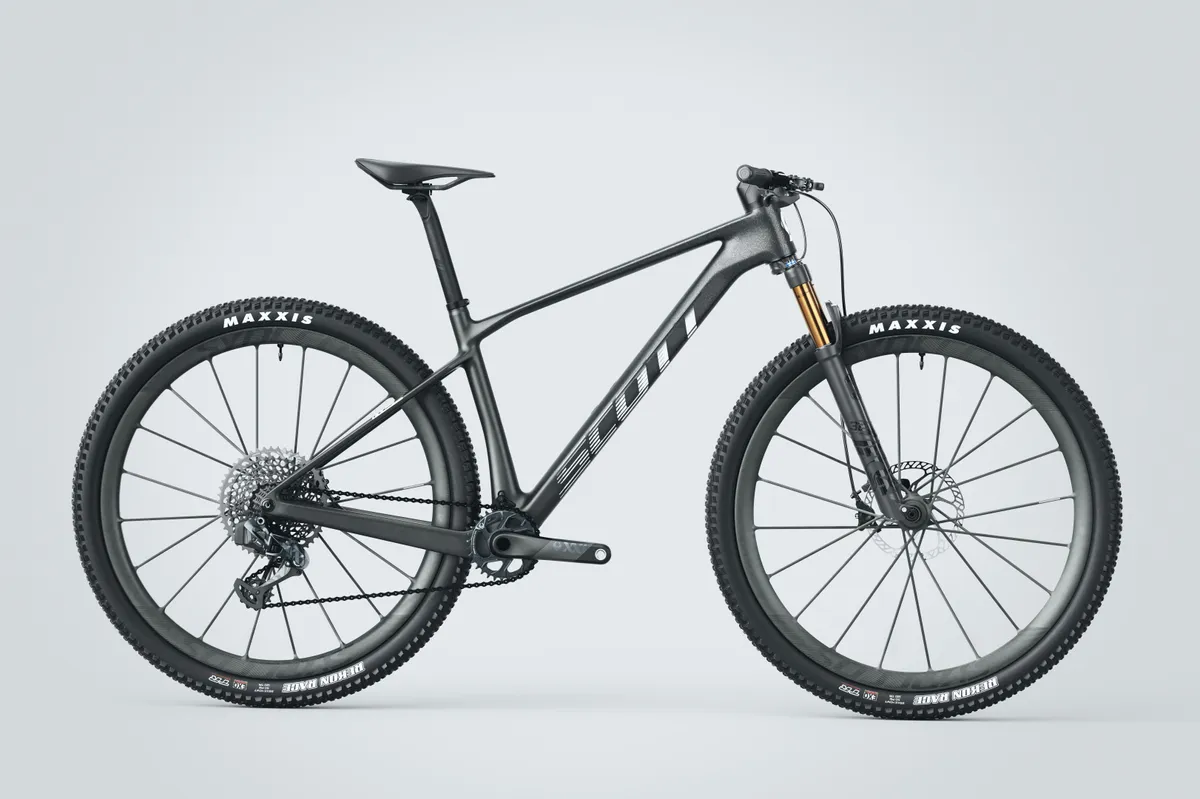
Scott Scale RC SL
- Fork: Fox Factory 32 FIT4 100mm
- Drivetrain: SRAM XX1 Eagle AXS
- Brakes: Trickstuff Piccola
- Wheels: Syncros Silverton SL2-30 CL
- Tyres: Maxxis Rekon Race
- Price: £13,999
Scott Scale RC World Cup EVO
- Fork: RockShox SID SL Ultimate 100mm
- Drivetrain: SRAM XX1 Eagle AXS
- Brakes: Shimano XTR M9100
- Wheels: DT Swiss XRC1200 CL
- Tyres: Maxxis Rekon Race
- Price: £8,299
Scale RC World Cup
- Fork: RockShox SID SL Select+ 100mm
- Drivetrain: SRAM X01 Eagle AXS
- Brakes: SRAM Level TLM
- Wheels: DT Swiss XRC15016
- Tyres: Maxxis Rekon Race
- Price: £6,499
Scale RC Team Issue
- Fork: RockShox SID SL Select RL 100mm
- Drivetrain: SRAM GX Eagle AXS
- Brakes: Shimano XT M8100
- Wheels: DT Swiss XR1850
- Tyres: Schwalbe Racing Ray SR (front), Schwalbe Racing Ralph SR (rear)
- Price: £4,149
Scott Scale RC Team
- Fork: RockShox SID SL RL 100mm
- Drivetrain: Shimano XT
- Brakes: Shimano XT M8100
- Wheels: Syncros Silverton 2.0
- Tyres: Schwalbe Racing Ray (front), Schwalbe Racing Ralph (rear)
- Price: £2,999
